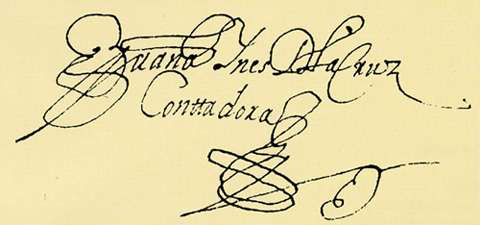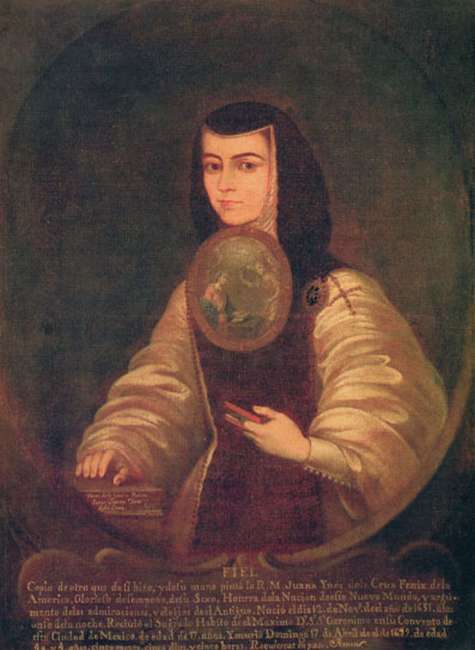

Sor Juana Inés de la Cruz (1648-1695)

I don't study to know more, but to ignore less.
Sor Juana Inés de la Cruz was a Mexican prodigy who learned to read at 3, learned Latin in 20 lessons, and wrote her first dramatic poem when she was eight. To show her intellectual capabilities, a public demonstration took place where 40 professors quizzed her on their fields of knowledge - and they and all participants - were amazed at her depth and understanding.
Early Life
Juana Inés de Asbaje y Ramírez de Santillana was born in San Miguel Nepantla near Mexico City. Her father was a Spanish captain, Pedro Manuel de Asbaje, and her mother was a Criolla woman, Isabel Ramírez. Juana herself is considered a Criolla. Juana received baptism on December 2, 1651. Her biological father abandoned her when she was only a child. Her maternal grandfather took care of her and gave Juana a comfortable life. Her childhood was spent at her grandfather’s estate Panoaya where she lived with her mother.

When Cruz was only a child, she often went to the Hacienda chapel where she enjoyed reading her grandfather’s books. This was an activity forbidden to girls. Juana’s gift for education was so great that she learned how to read and write Latin by the age of three. It is reported that she could also do accounts when she was 5 years old. When she was 8, Juana composed a poem on the Eucharist and by her teenage years, she mastered Greek logic and taught Latin to young children. She also knew the Aztec language of Nauhati and wrote some poems in it.
Notable works
Her poetic masterpiece has to be First Dream - philosophical silva that deals with “the shadow of night beneath which a person falls asleep in silence. The person's body ceases its ordinary operations, which are described in physiological and symbolical terms, ending with the activity of the imagination as an image-reflecting apparatus: the Pharos.
Her other works include two comedies: Pawns of a House, and Love is but a Labyrinth. The second work premiered on February 11, 1689. It was staged during the celebration in honor of the inauguration of the viceroyalty Gaspar de la Cerda y Mendoza. Ezequiel A. Chavez claims that Fernandez del Castillo was a coauthor of Love is but a Labyrinth.

The comedy is based on the well-known mythology of Theseus, who was a hero from Crete island. He awakens the love of Ariadne and Fedra, as well as fight the Minotaur in the Labyrinth. Sor Juana reimagined Theseus as a baroque hero. This idea was later utilized by her countryman Juan Ruis de Alarcon. His defeat of the Minotaur allowed him to be humble instead of feeling pride for the deed.
In addition to the two comedies, Sor Juana is credited as the author of an ending to The Second Celestina comedy by Agustin de Salazar. Guillermo Schmidhuber found the version of the comedy with a different previously unknown ending. In 1990s he suggested that it was written by Sor Juana. Octavio Paz, Georgina Sabat-Rivers, Luis Leal, and other literary critics consider her to be the co-author. However, this claim is not supported by José Pascual Buxó and Antonio Alatorre.
Other interests
In addition to having an avid interest in philosophy and poetry, Sor Juana was interested in mathematics, music, and science. A musical touch was always a part of her poetry. She was also interested in studying the theory on instrumental tuning, especially in the Baroque period. Son Juana was engrossed in her research that she even released a treatise called El Caracol that unfortunately did not survive to our days. This work tried to solve the problems that Pythagorean tuning suffered as well as simplify musical notation.
More facts
Sor Juana Inés de la Cruz (1935)
Sor Juana Inés de la Cruz (1962)
Juana Inés (2016)


















































